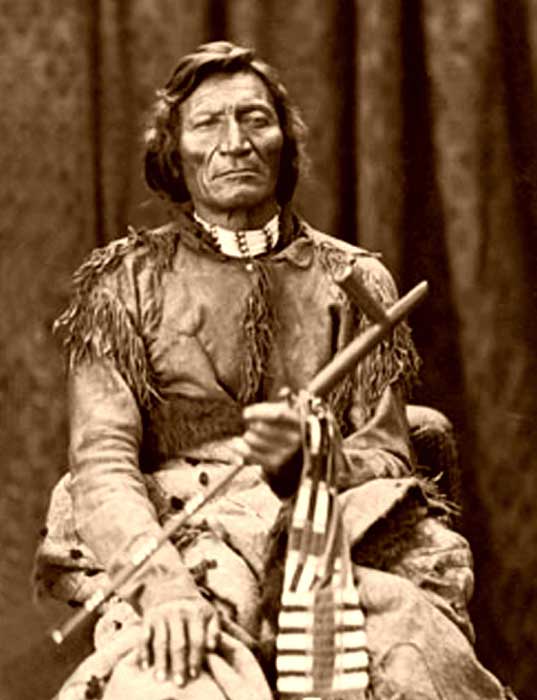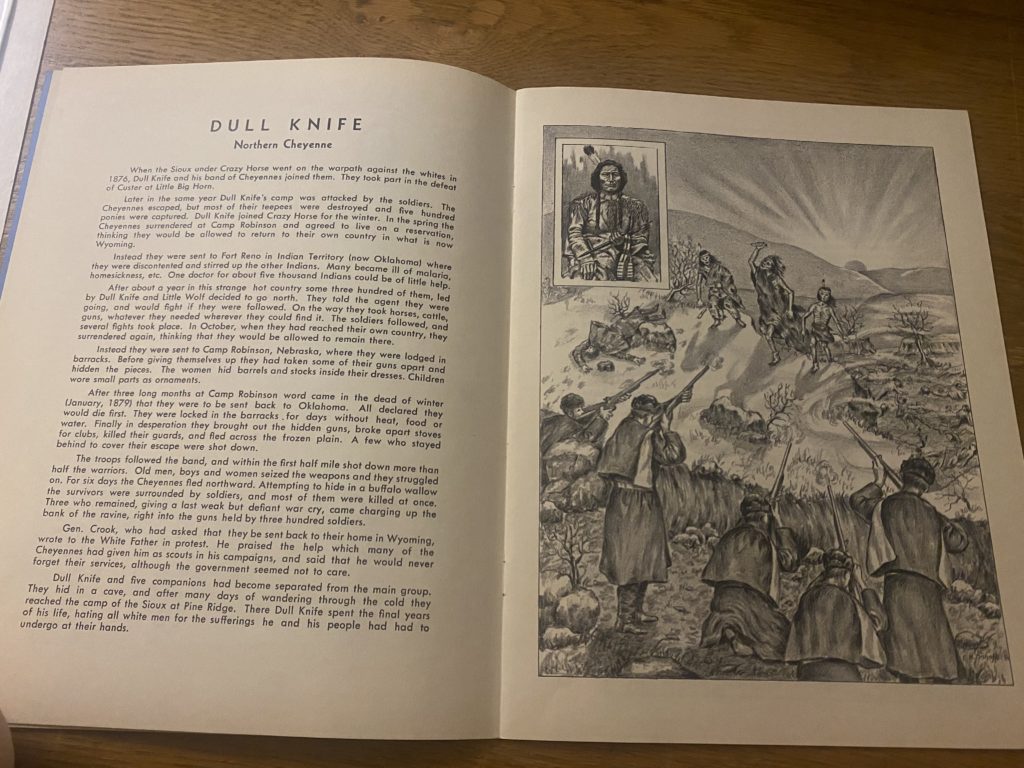When the Hoover Collection was first processed, it was actually at Sprague Library at Harvey Mudd College. Herbert Hoover the third donated the collection originally to Harvey Mudd College, and they created a Sprague Library to house the material. It created a lot of popularity for Harvey Mudd College, however, Sprague Library was ill-prepared to take on such a collection. I found the initial report recording the lack of temperature control (a cool temperature is critical for books, so they do not get damaged). Furthermore, there were reports of vandalism and petty theft. Additionally, researchers were reading the materials in the same room where the collection was being housed, which could encourage theft. Sprague Library did improve these conditions. Currently, Sprague Library no longer exists, and the materials got moved to the Honnold Mudd Library instead. It is fascinating to learn the history behind the cataloging of such an impressive collection.
The Machine of History
“All I want for Christmas is my 2.0”
Lyrics by Joe Platt
I came across this song will drafting my processing plan. Since we are half way through the semester, I found the sentiment fitting.
Chorus: All I want for Christmas is my 2.0/ My 2.0, my 2.0/ All I want for Christmas is my 2.0/ So I could wish you “Merry Christmas”
Seems so long since I could say/”I’ll beat the draft, at HMC I’ll stay.”/Gosh oh gee how happy I’d be/ If I could only pass
Chorus: All I want for Christmas is my 2.0/ My 2.0, my 2.0/ All I want for Christmas is my 2.0/ So I could wish you “Merry Christmas”
Everybody stops me and stares at me/ My grade point average is as low as it can be/ I don’t know just who to blame/ For this catastrophe/ But my only wish for Christmas Eve/ Is as plain as it can be
Chorus: All I want for Christmas is my 2.0/ My 2.0, my 2.0/ All I want for Christmas is my 2.0/ So I could wish you “Merry Christmas”
Until next time,
Tiara N. Yahnian-Murta
From Surveying to Transdisciplinary Thinking
I would like to preface this week’s blog post with a brief professional bio. My name is Tiara N. Yahnian-Murta and I am a PhD student in the Cultural Studies Department at Claremont Graduate University. I received a B.A. in Philosophy and a B.S. in Urban Studies from Worcester State University in Worcester, Massachusetts. I also earned an M.A. in Holocaust and Genocide Studies from Stockton University in Galloway, New Jersey. I am interested in the ways nationalism shapes the intertwined processes of aestheticization, historicization, and securitization.
Box 43 (Folders 25 and 26)
This is the first time that I am prompted to pause and reflect on this collection. Box 43 contains 28 folders. Folder 25 is titled “The Nuclear War Business” (a speech by Dr. Platt at Claremont U.C.C. Congregational on March 17, 1985 as reported by Felix Manley and corroborated by Platt) and folder 26 is titled “Thoughts on Man’s Purpose in Life” (a speech by Admiral H.G. Rickover at a luncheon meeting of the San Diego Rotary Club on February 10, 1977). I couldn’t help but read the documents contained within each in full. If you are unaware of current nuclear war news, see the Federation of American Scientists (FAC) Nuclear Information Project in the News (https://fas.org/issues/nuclear-weapons/nuclear-information-project-news/). In 1985, Dr. Platt noted that “the prevention of a nuclear Holocaust is the most urgent business on the human agenda.” Something, that then-and-now concerns everyone.
Moving to Admiral H.G. Rickover’s speech, he identified five principles of existence: responsibility, perseverance, excellence, creativity, courage, and the development of standards of ethical and moral conduct. He argued that “a cause of many of our mistakes and problems is ignorance – an overwhelming national ignorance of the facts about the rest of the world.” The remedy to such ignorance: reading and writing — the most significant of all human efforts, according to Rickover — matched with action.
What is the time of responsibility?
Until next time,
Tiara N. Yahnian-Murta
Joseph Platt – Physicist, President, and Prominent American
Joseph Platt graduated from Cornell University in 1942 with a PhD in Physics. His dissertation focused on the structure of metallic potassium. To be honest, I have no idea what that means. What I vaguely recall from a high school chemistry class is that potassium = K on the periodic table of elements. One of the perks of being a CCEPS Fellow: you learn new things all the time. Did you know that “potassium is the seventh most abundant metal in the Earth’s crust (2.4% by mass)?” I certainly didn’t! Thanks to the Royal Society of Chemistry.
Platt served as President of Harvey Mudd College from 1956 to 1976. In a 1962 article, the Progress-Bulletin described him as “the world’s only ballad-singing college president.” I hope to find and share some of his songs as I make my way through the remaining boxes.
In the spring of 1975, just a year before stepping down as President, Joseph Platt was notified of his election to membership (through 1977) to the National Register of Prominent Americans and International Notables. He would have been 60 years old at the time. Cheers to Platt! Where do see yourself in five, ten, twenty years?
Tiara N. Yahnian-Murta
Getting Started with the Joseph Platt Papers
Let the surveying begin!
Day 1
I made my way through two boxes today. The first box contained thirty folders of correspondence, U.S. Atomic Energy Commission (AEC) files, and reprints of physics articles. Have you ever thought about atoms while writing? I hadn’t until today when I came across a nuclear fact sheet (see PIP Atomic Energy Information Kit Nuclear Fact Sheet). Interestingly, “it would take several million atoms to equal the size of the period at the end of this sentence.” How many periods are in a thesis or dissertation? That’s a lot of atoms… The second box contained roughly 130 folders of travel files dating from 1958 to 1966. I am excited to learn more about Joseph Platt’s trip to the United Nations Educational, Scientific and Cultural Organization (UNESCO) headquarters in Paris, France in 1960.
Tiara N. Yahnian-Murta
Indigenous Education: the Center Piece of the Barbara Drake Collection
There are so many elements and materials that Barbara Drake donated to The Claremont Colleges, those of us archiving can sometimes lose sight of the specifics. Until this week, I hadn’t spent much time looking over the primary education resources, except for when these materials were divided into subject specific categories weeks ago. However, this week when I became reacquainted with these materials, it brought to life the spirit of Indigenous education that Drake encouraged and centered in her own life.
Needless to say, Barbara was passionate about educating every age group. However, in her materials there is an unmistakable emphasis on making Indigenous education available to primary school children. Not only did Barbara travel between Southern California districts and schools, hosting workshops and interactive lessons ranging in topic from traditional Native American housing to astronomy that incorporated an Indigenous point of view. In addition to these services, she also kept a meticulous variation of Indigenous centered pedagogies and teacher’s guides. These guides inform educators on how to center Native American perspectives, beliefs and traditions in primary school lessons. These pedagogies and guides touch on topics such as Indigenous time-keeping, astronomy, language, math, music and many more.
Plainly stated, Barbara made an effort to retain education guides on how to center Indigenous voices and perspectives in just about any primary school lesson. It cannot be overstated how important these resources are. Children of Indigenous heritage are rarely catered to in terms of educational representation, Barbara’s materials make a serious, and much needed, attempt to correct that.
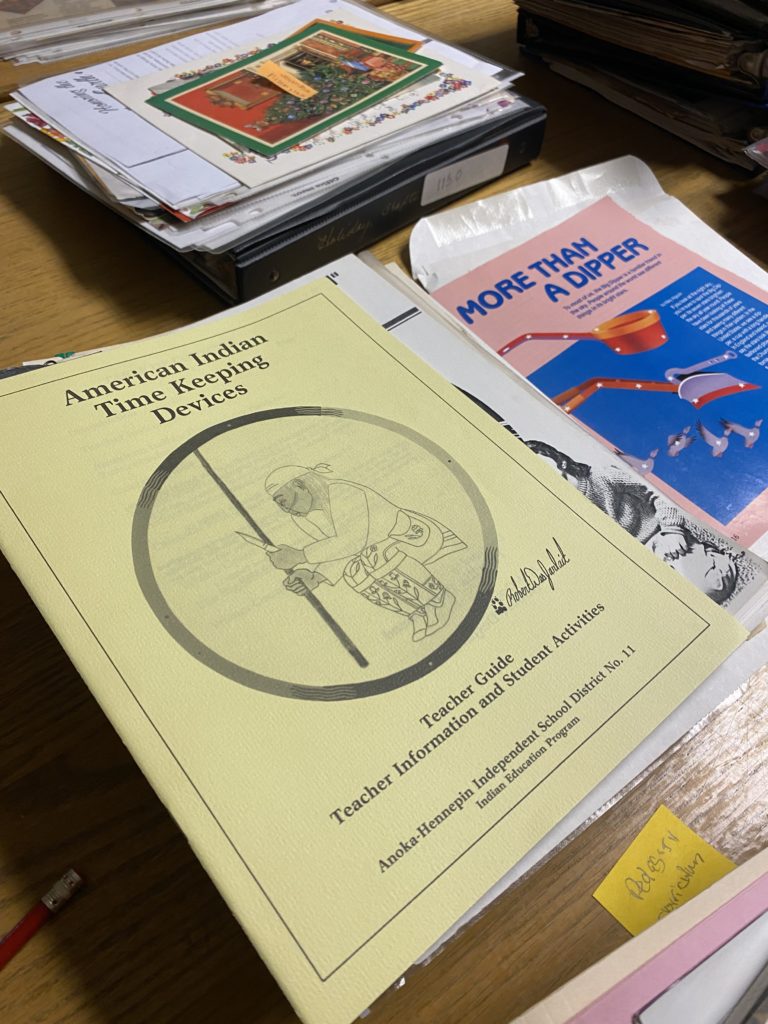
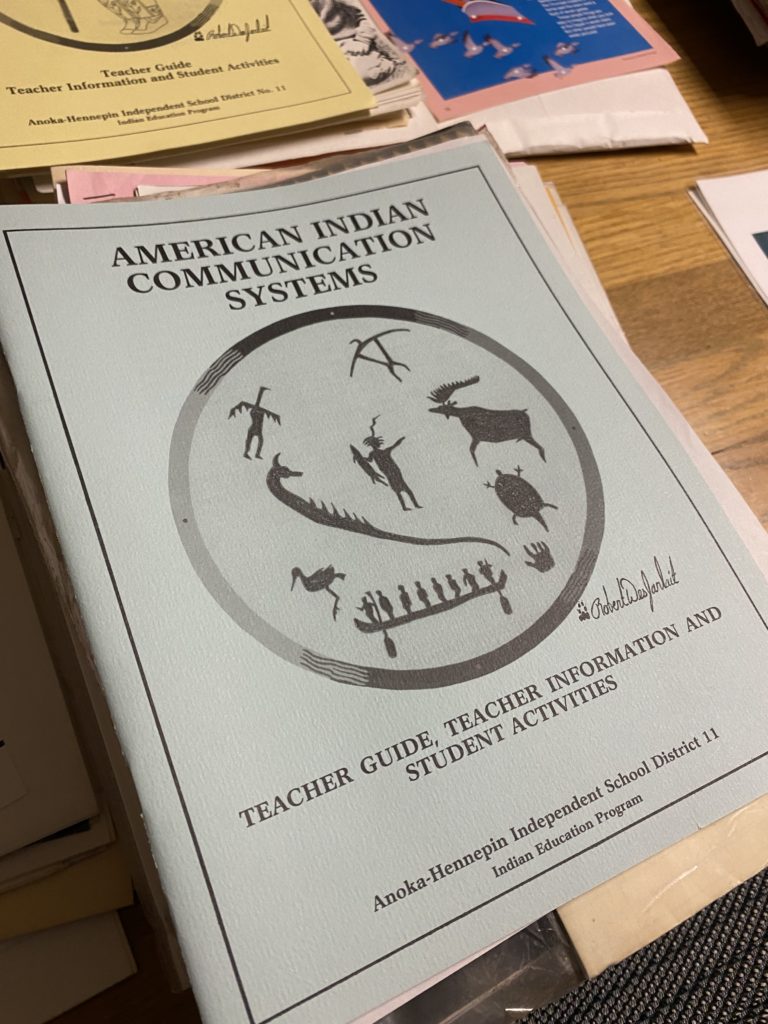
Return to Processing
I returned to Claremont after my summer break. I am now processing, reorganizing, and refoldering the documents within the Hoover Collection. I have focused mainly on the 1970s and the 1980s form when the Collection was first donated to the library. I got the opportunity to see my collection in action. There was a display of some of the books within the Hoover Collection to a geology class. It was awesome to talk about the collection and my work with people. Additionally, it is amazing to see the amazing job that archivists do to preserve sources. Additionally, I feel as though I getting to experience an intimate knowledge with the matieral- uncovering the mystery of how people came to understand the Hoover Collection. Furthermore, I got to learn new library science skills like photocopying folders to acidic-free paper and getting to witness acid burn and rusty on paper first hand made me fully appreciate history and the material even more.
Sustainability
As my colleague and I continue to file Barbara’s materials into their designated folders, I was fortunate enough to stake my claim over filing her research on ethnobotany, plants and vegetation. As I was doing so, I couldn’t help but think of climate change. As a gen y/gen z cusp, I have known most of my life that the planet was suffering from our wanton abuses of its many resources.
This made me think about the machinations under which our elected leaders, and elected leaders abroad, stand idly by while the planet dies before our eyes. They retain no urgency. They seemingly retain no foresight. They don’t mind if the planet is in an irreversible spiral by the time we inherit it. It is not lost on me that the world will likely look different in 10, 15, or 20 years. However, by that same tenor it is not lost on me that we might continue to see our natural resources stripped away, laid barren or depleted in the name of commercialization during that same time.
Barbara, and her ancestors that came before her, put an unmistakable emphasis on plant-based skills and food, while simultaneously cataloguing geographically relevant biodiversity as they went on. One of the most valuable things I have learned from Barbara’s collection is the incredible biodiversity represented in California, and specifically Los Angeles County. It appears to me, from her materials, that Indigenous peoples have a mutual respect for the earth. They have been exceptional stewards of the earth for centuries. And yet, colonization has deprived all of us existing today of a planet in good health. Instead, the exploitative nature of our commercialized industries and agriculture have painted us into a corner where we are rapidly losing resources and garnering natural disasters. Poignantly, Barbara’s materials allow any observer to be a more careful steward of our ailing planet. In her materials, one can find plant-based recipes that incrementally contribute to a potential decrease in the demand for animal products. In her materials, one can find instructions and suggestions on how to garden, fish and hunt, allowing the reader to devise strategies for a decreased reliance on industrialized means of production.
Simply put, there’s something worth knowing in Barbara’s collection for everyone, especially environmentalists.

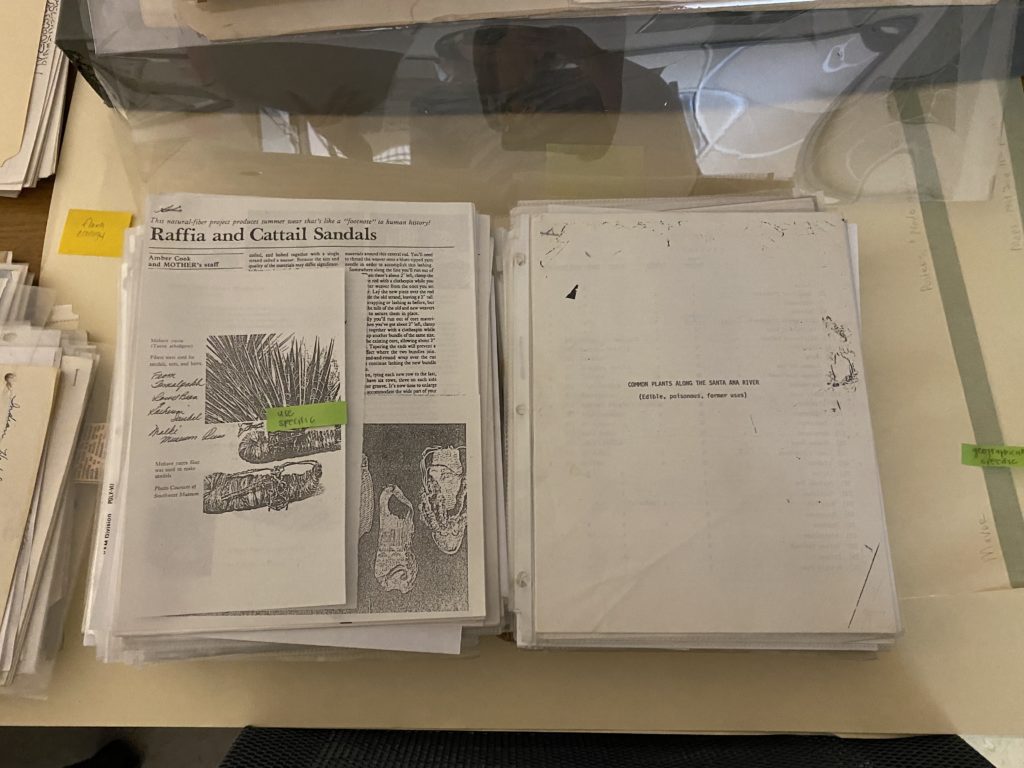
Dull Knife, the Cheyenne and the Pursuit of Self-Determination
What constitutes a hero? Some might be tempted to list attributes, deeds, or point to a righteous struggle in which one emerges victorious. I have come to understand that heroes are mainly subjective, and many who are heroic are not catalogued the way, or to the extent, they deserved. Many Native Americans displayed unabashed heroism when colonizers encroached on their land, families, livestock and livelihood. One of these was Dull Knife of the Northern Cheyenne Nation.
I was particularly moved by the story of Dull Knife, the Cheyenne and their hard fought struggle to remain autonomous. Dull Knife was no stranger to resistance or battle, he fought in the Cheyenne-Arapahoe War, the Sioux Wars of the Northern Plains, and fought alongside Crazy Horse and Sitting Bull during the War for the Black Hills. The Native Americans were underestimated, and after each battle they, along with their Chiefs, made their formidable posture known. As such, General George Crook coordinated a surprise attack on Dull Knife’s camp. Those who survived fled and surrendered elsewhere. Subsequently, they were forced onto a reservation in Oklahoma that touted little game, unfamiliar weather and was host to diseases.
In 1878, Dull Knife and 300 others fled, unable to bare the deplorable conditions the colonizers had provided for them. They all began a 1000 mile journey with a single step. On this journey they were forced to split up, reconfigure and eventually surrender at Ft. Robinson. A year after the death of Dull Knife, the Northern Cheyenne were granted the Tongue River Reservation in Montana.
The later years of Dull Knife’s life were marked with struggle, oppression, concealment and brutalization. He never lived to see the small consolation of a reservation, closer to their home of Wyoming, awarded to his people. Even so, he never wavered in his struggle for freedom. He never caved to the proposals of assimilation or displacement, and no matter how hard the white invaders tried, they could never scrub history of his influence or his stature. Rather, like many Native American Chiefs, his struggle casts a large shadow over society 150 years later. The shadow of his heroism, and the heroism of those like Crazy Horse and Sitting Bull, eclipse the American platitude of “liberty and justice for all”. When one takes the time to learn about those like Dull Knife, they are met with the duty to acknowledge that we are truly an imperfect nation, founded by imperialism. Barbara’s collection reminds me that the term “Founding Fathers” is a misnomer. John Adams, Thomas Jefferson, nor the others founded this land. On the contrary, it was the ancestors of those like Dull Knife and Barbara herself who are true founders.
